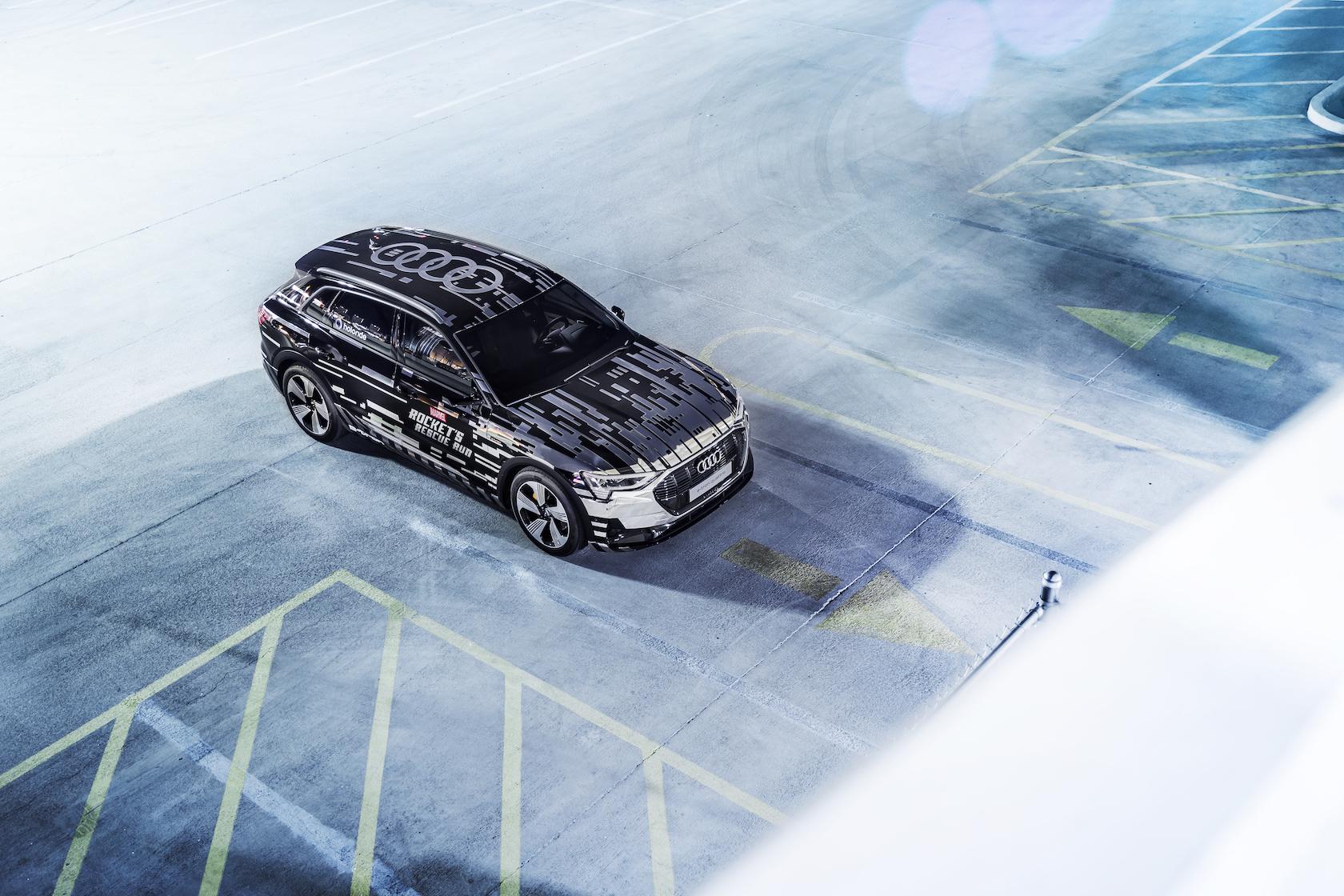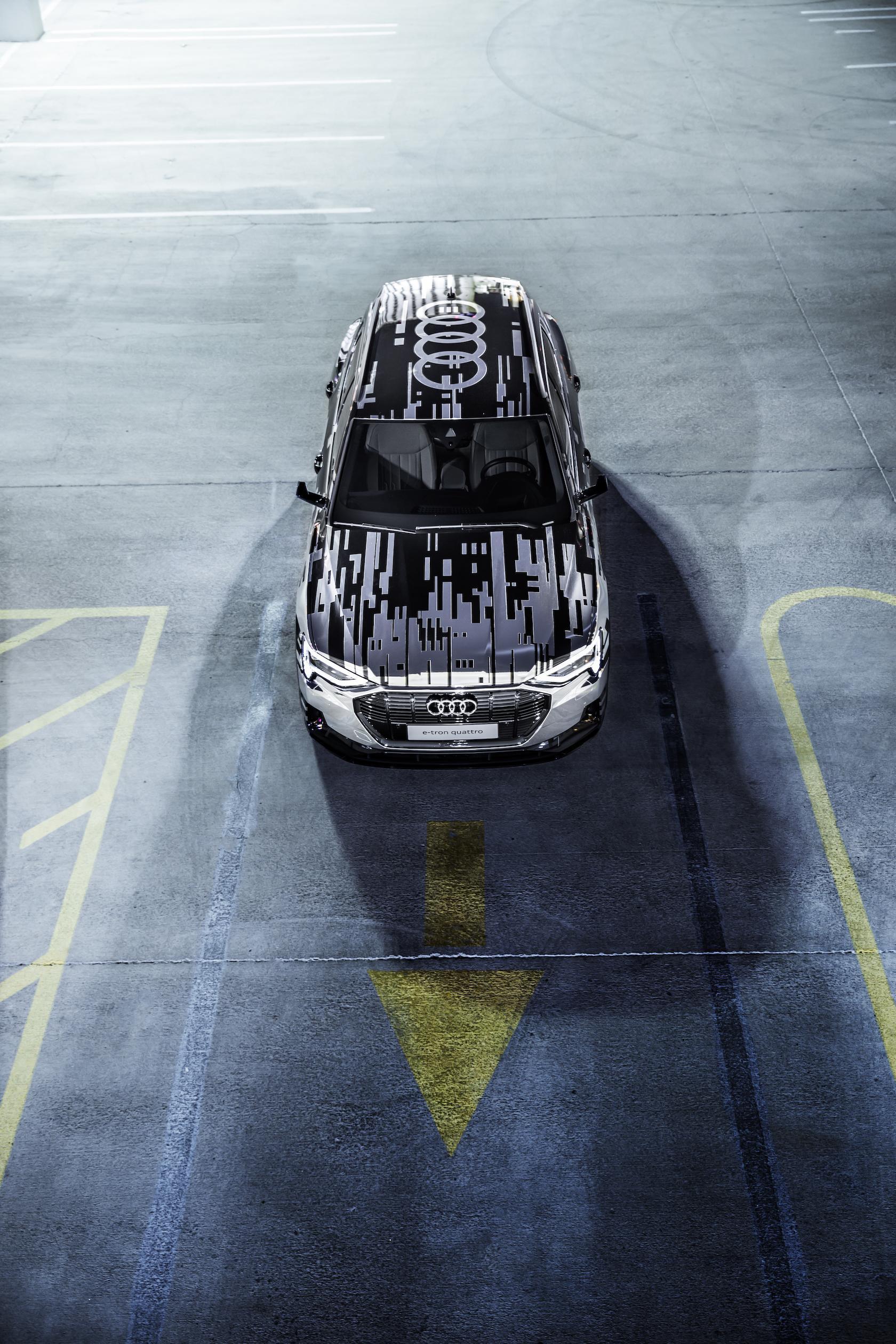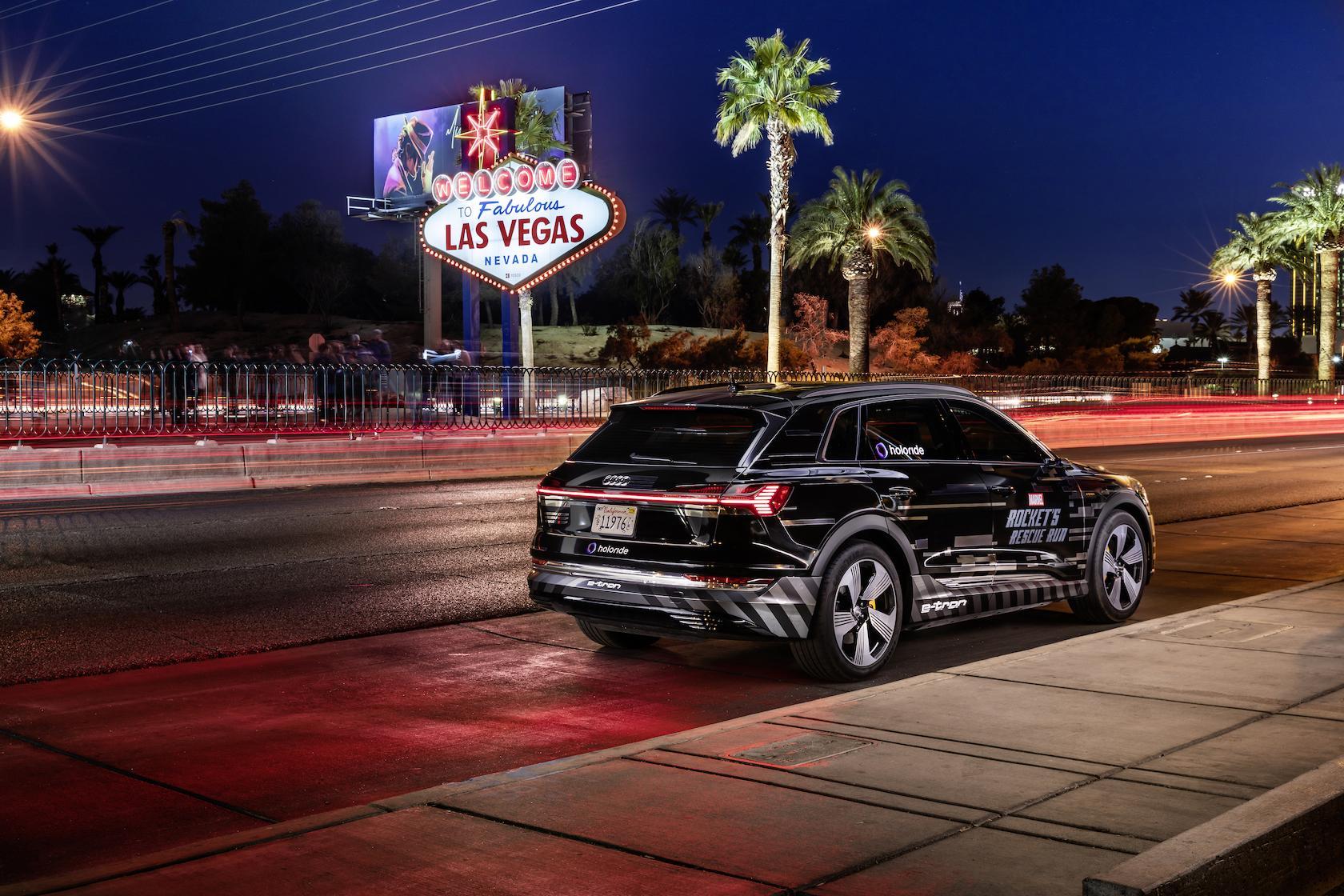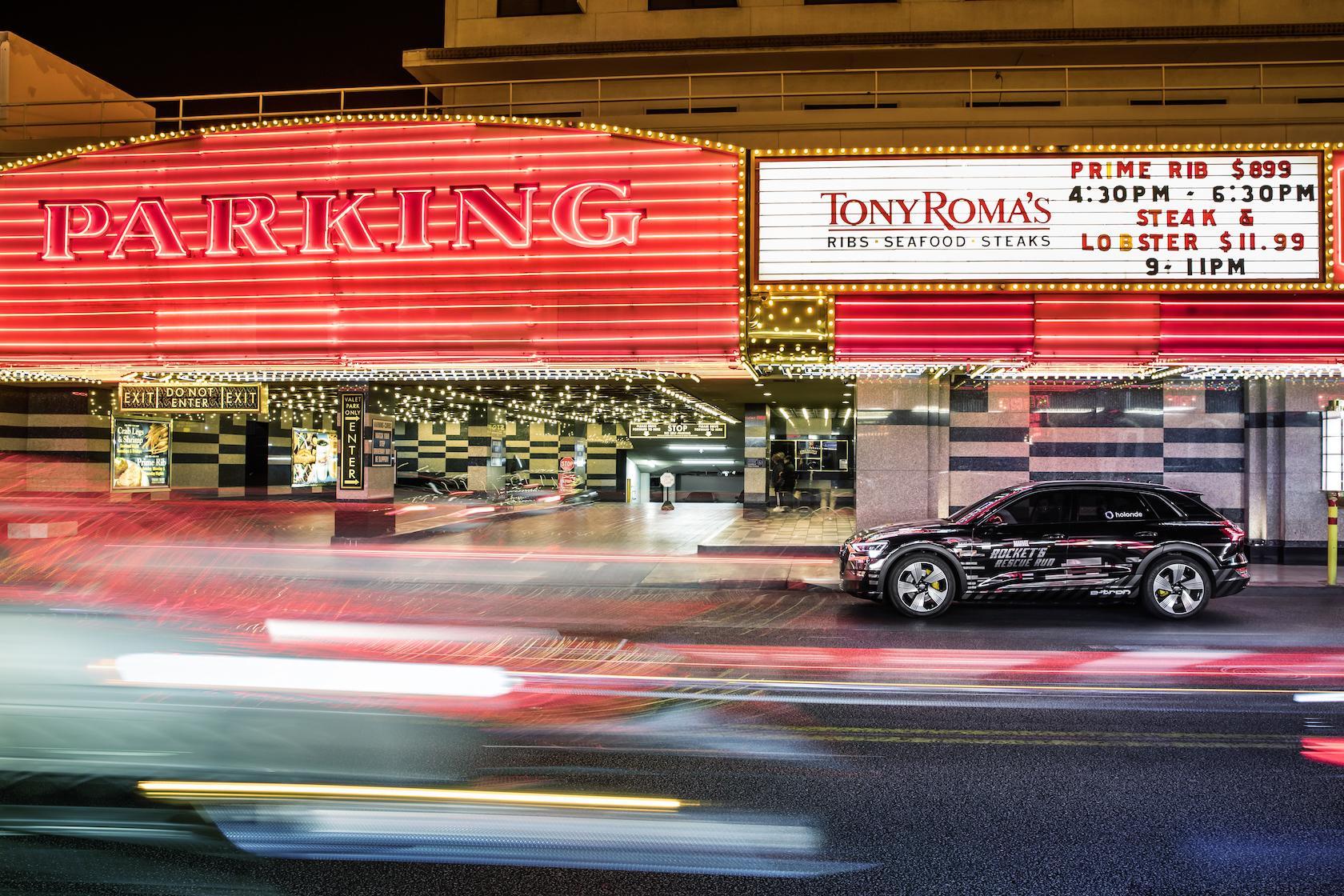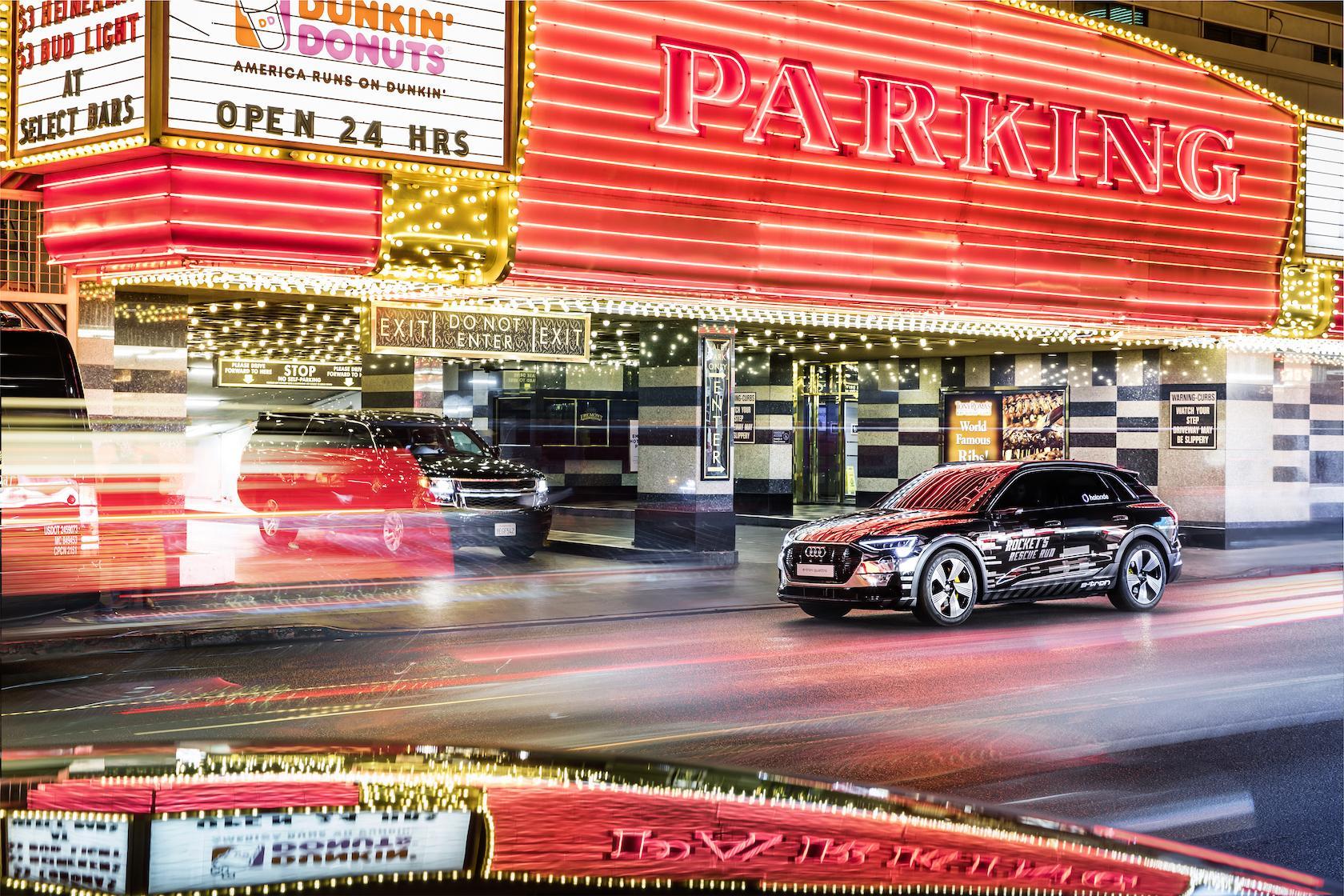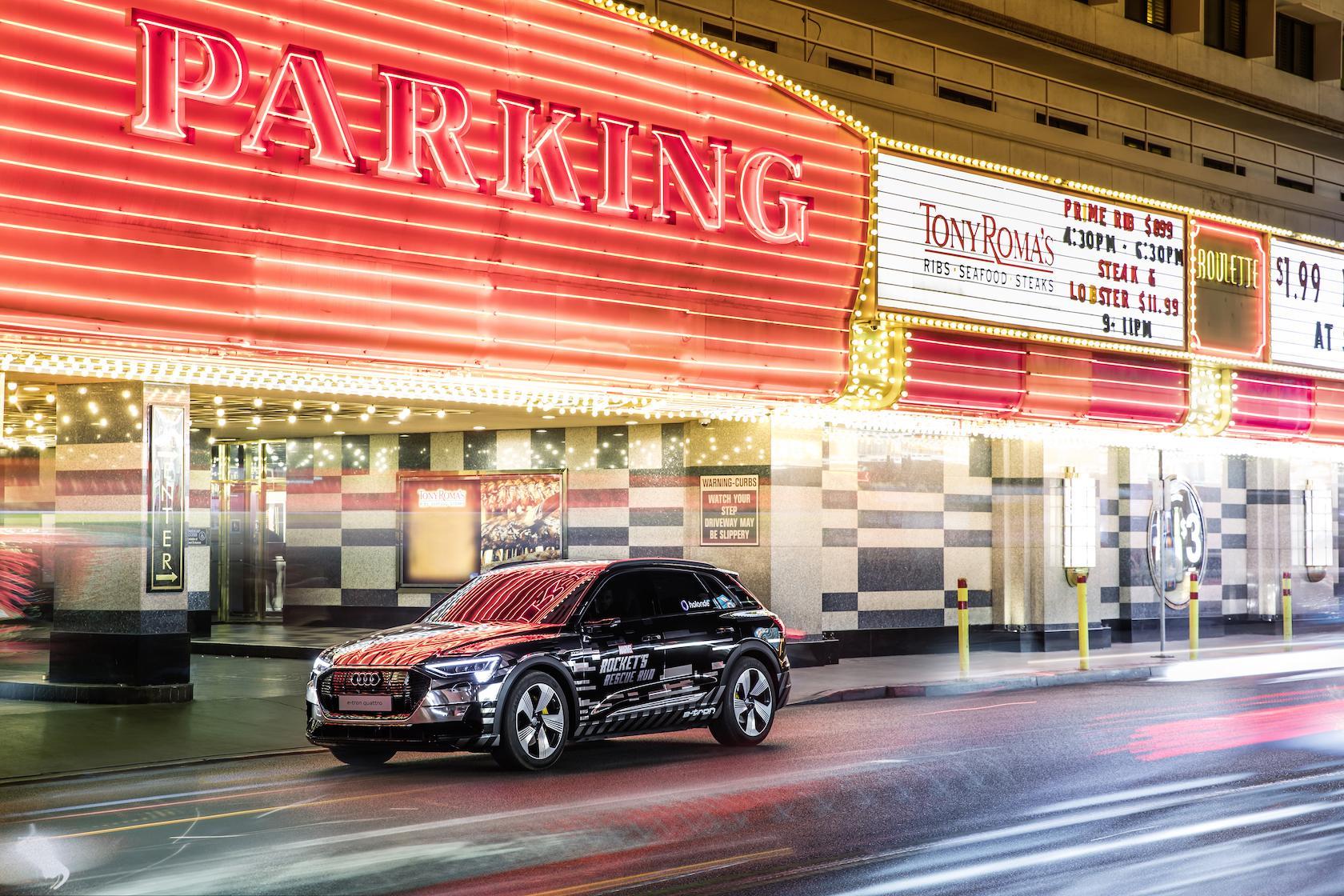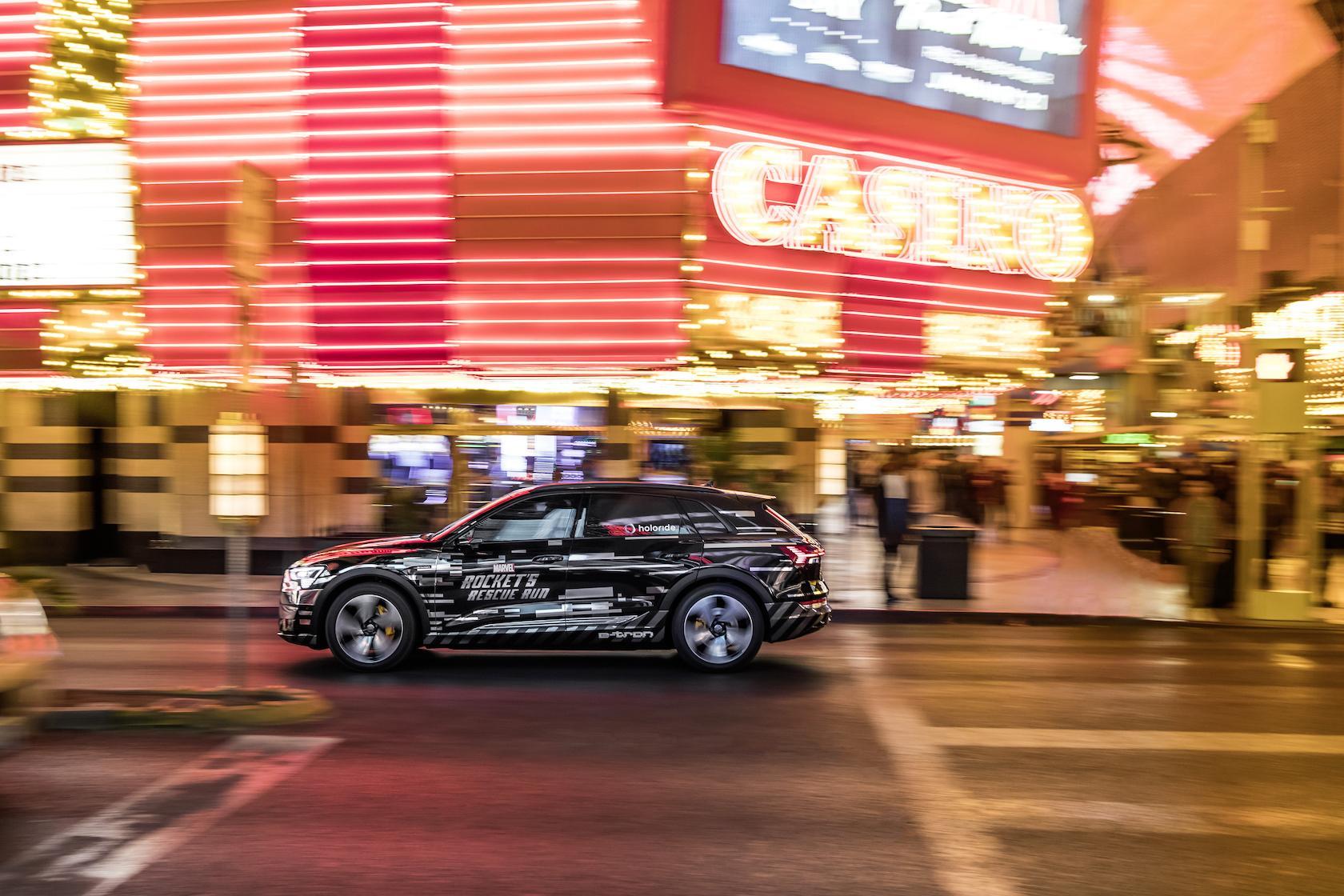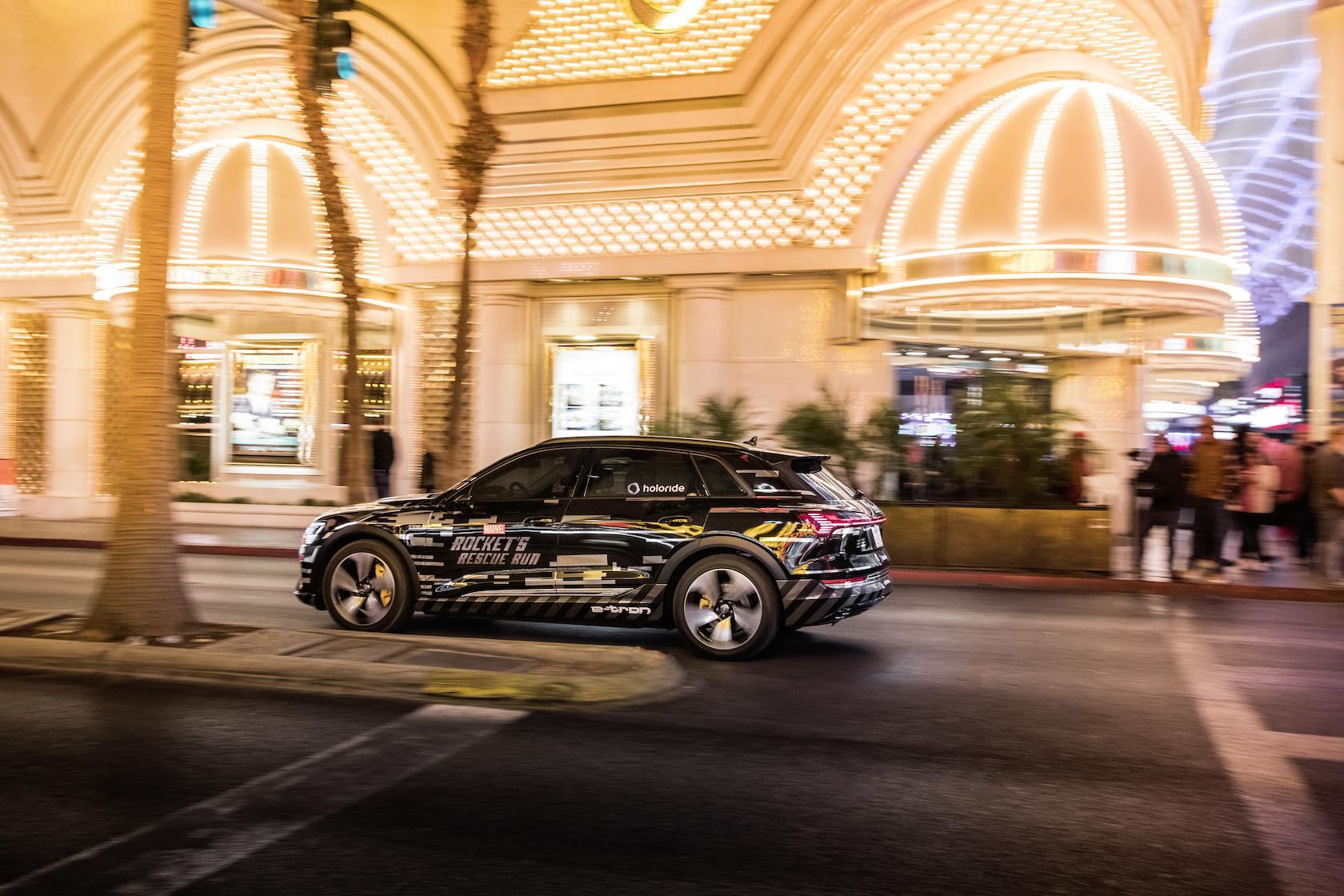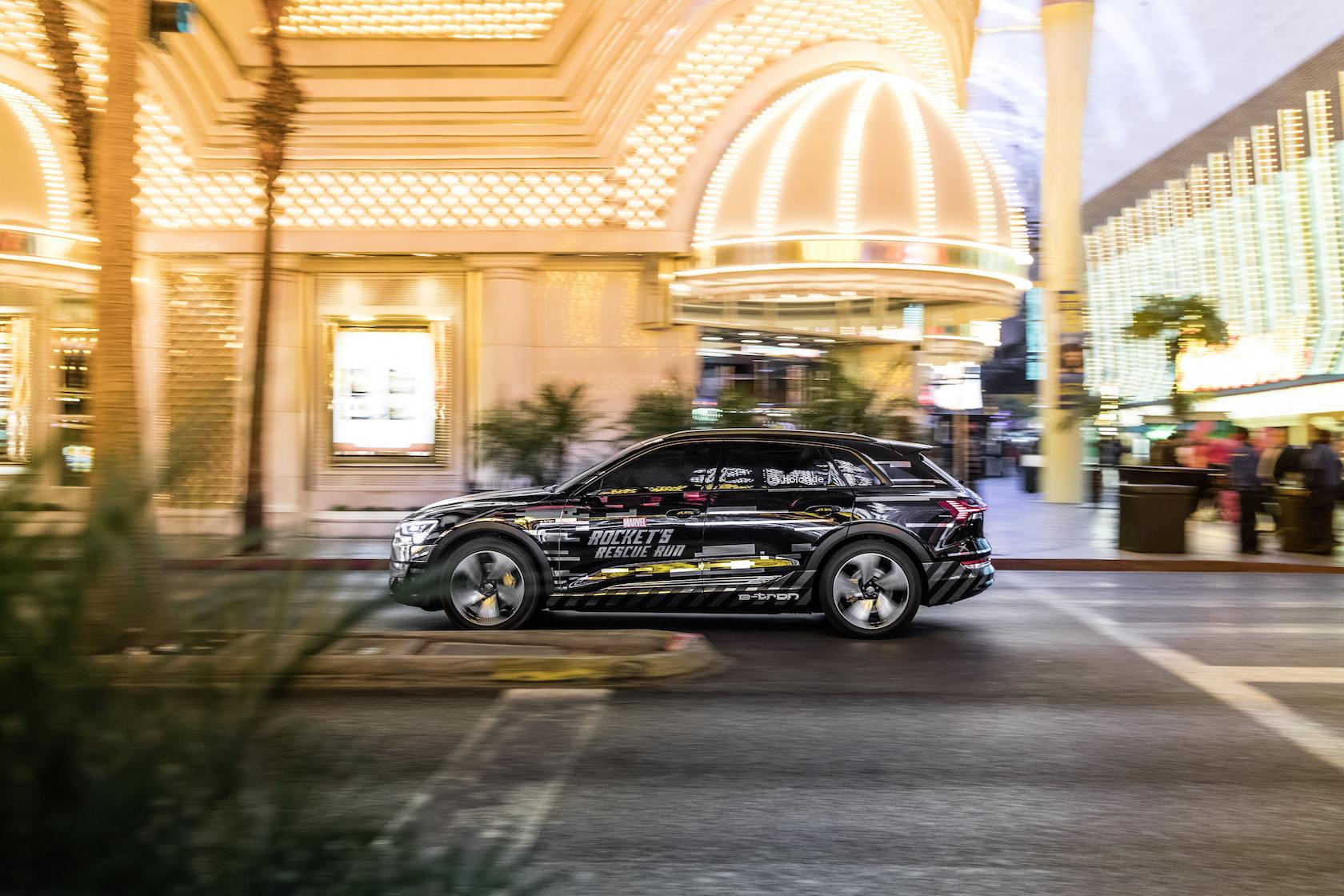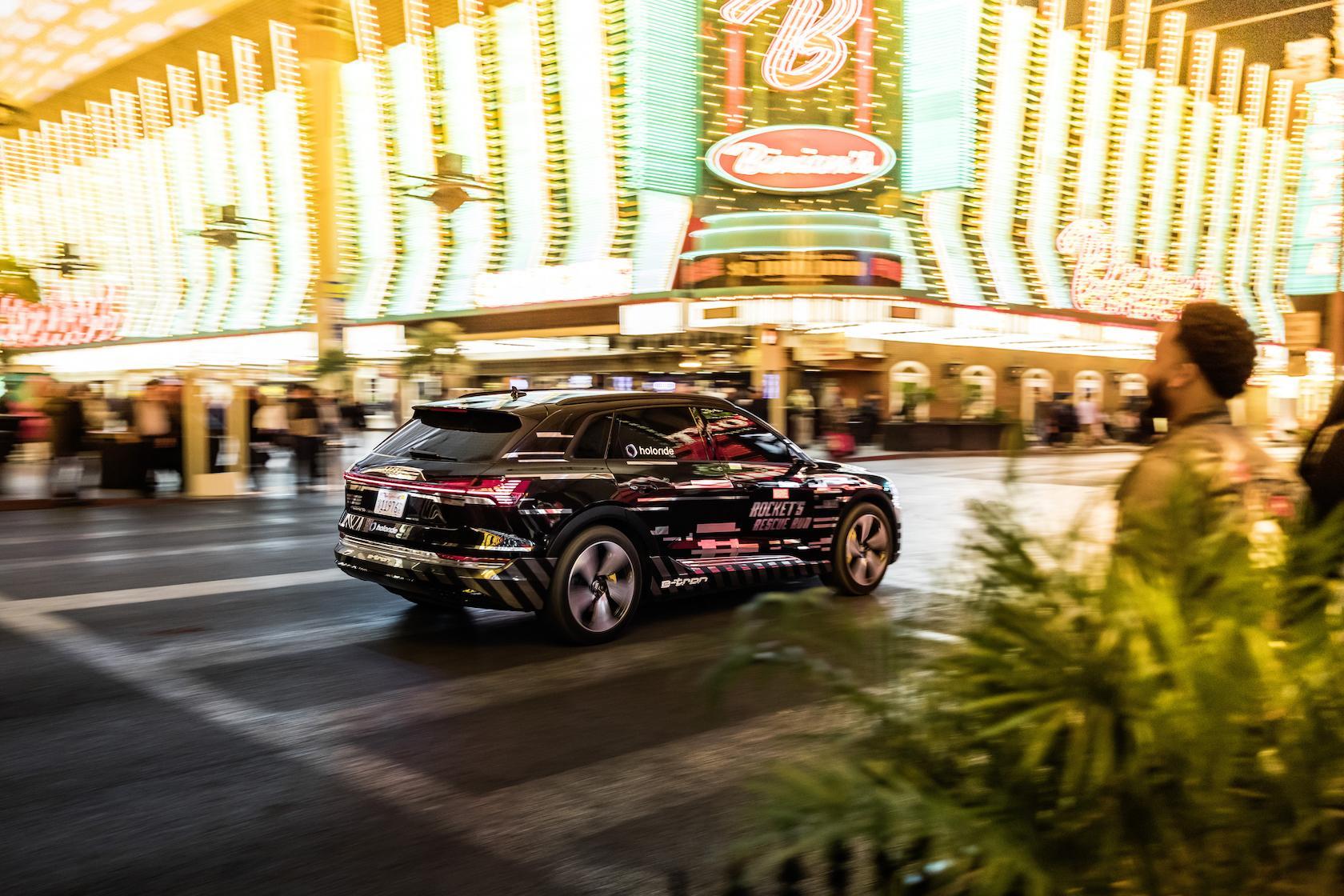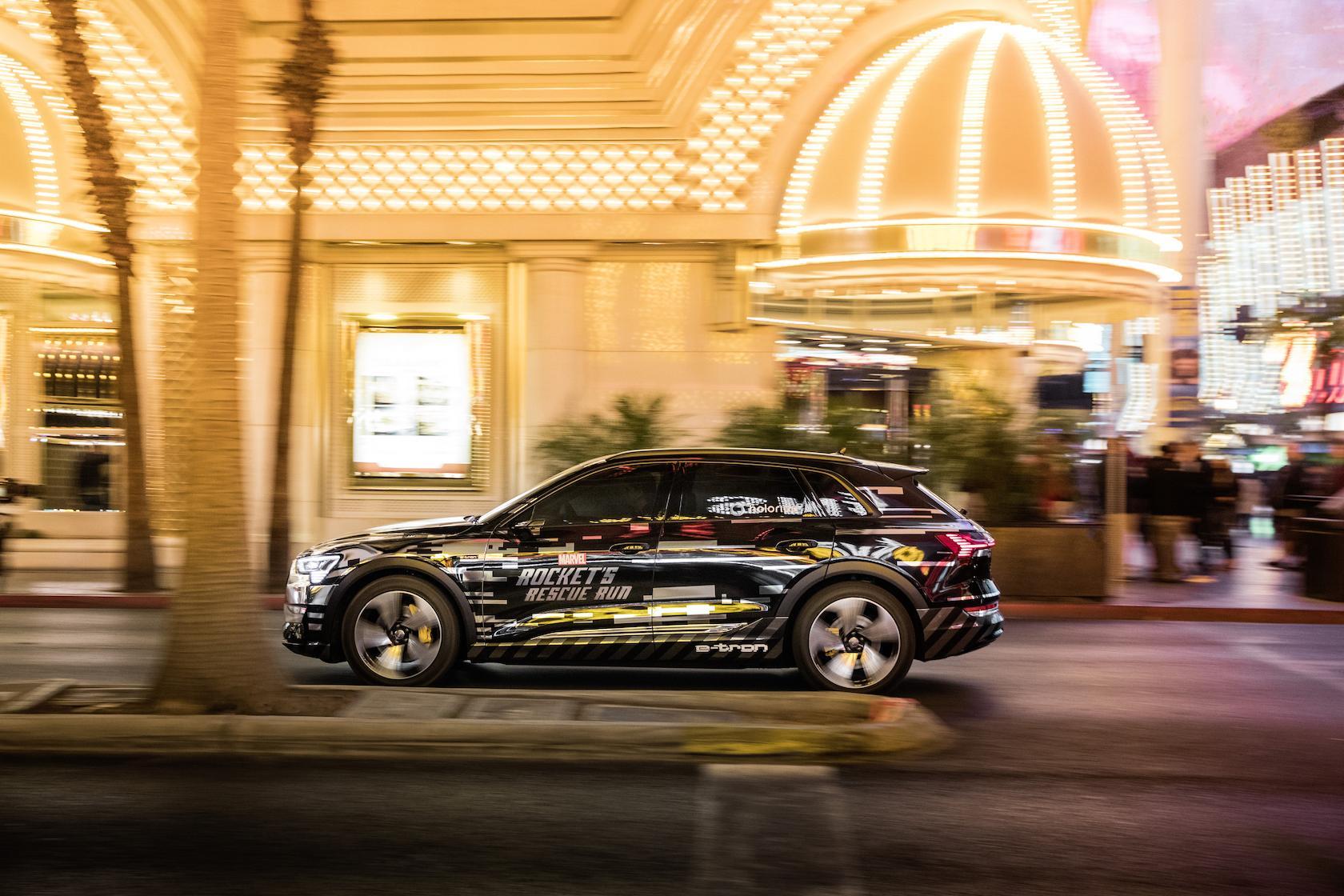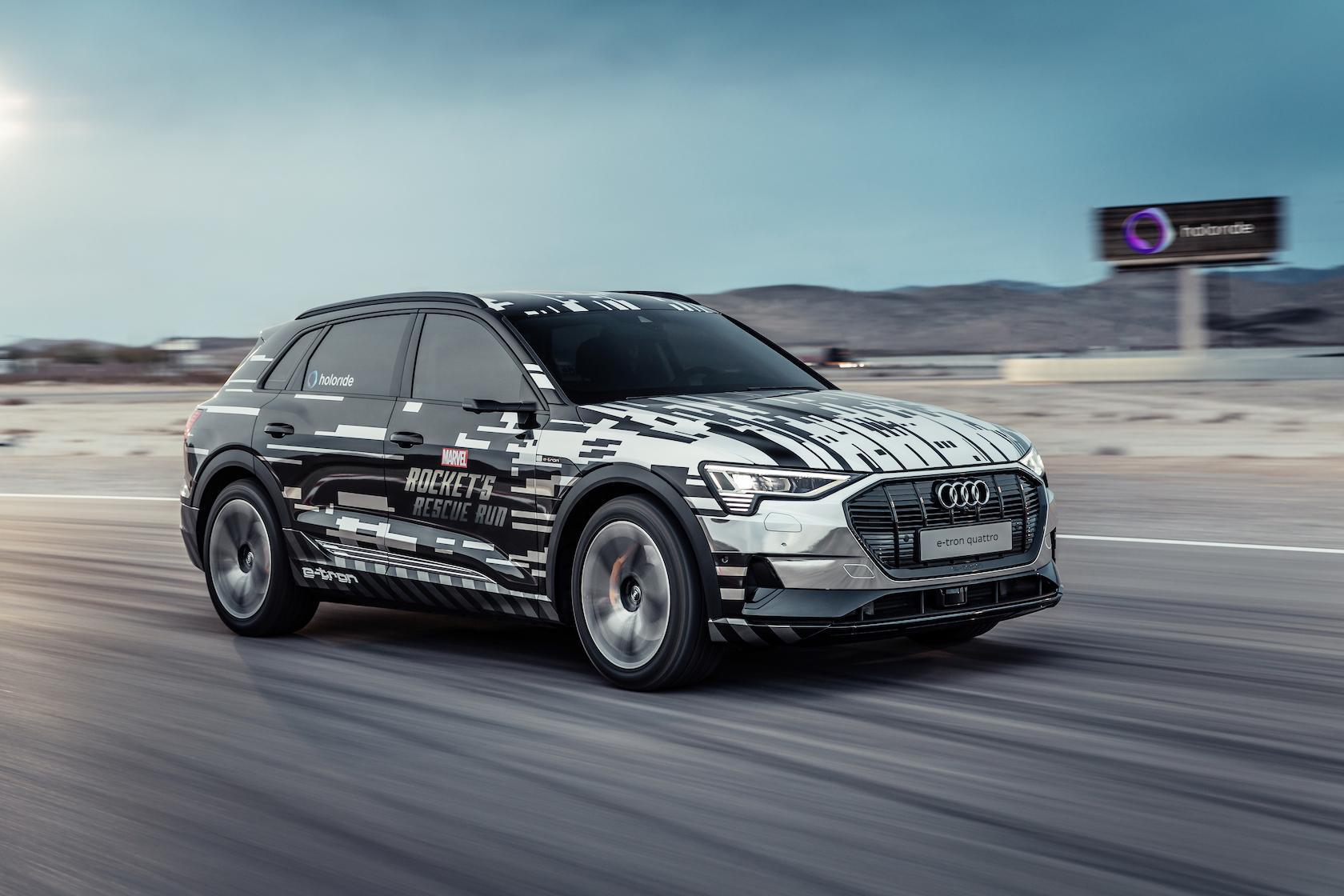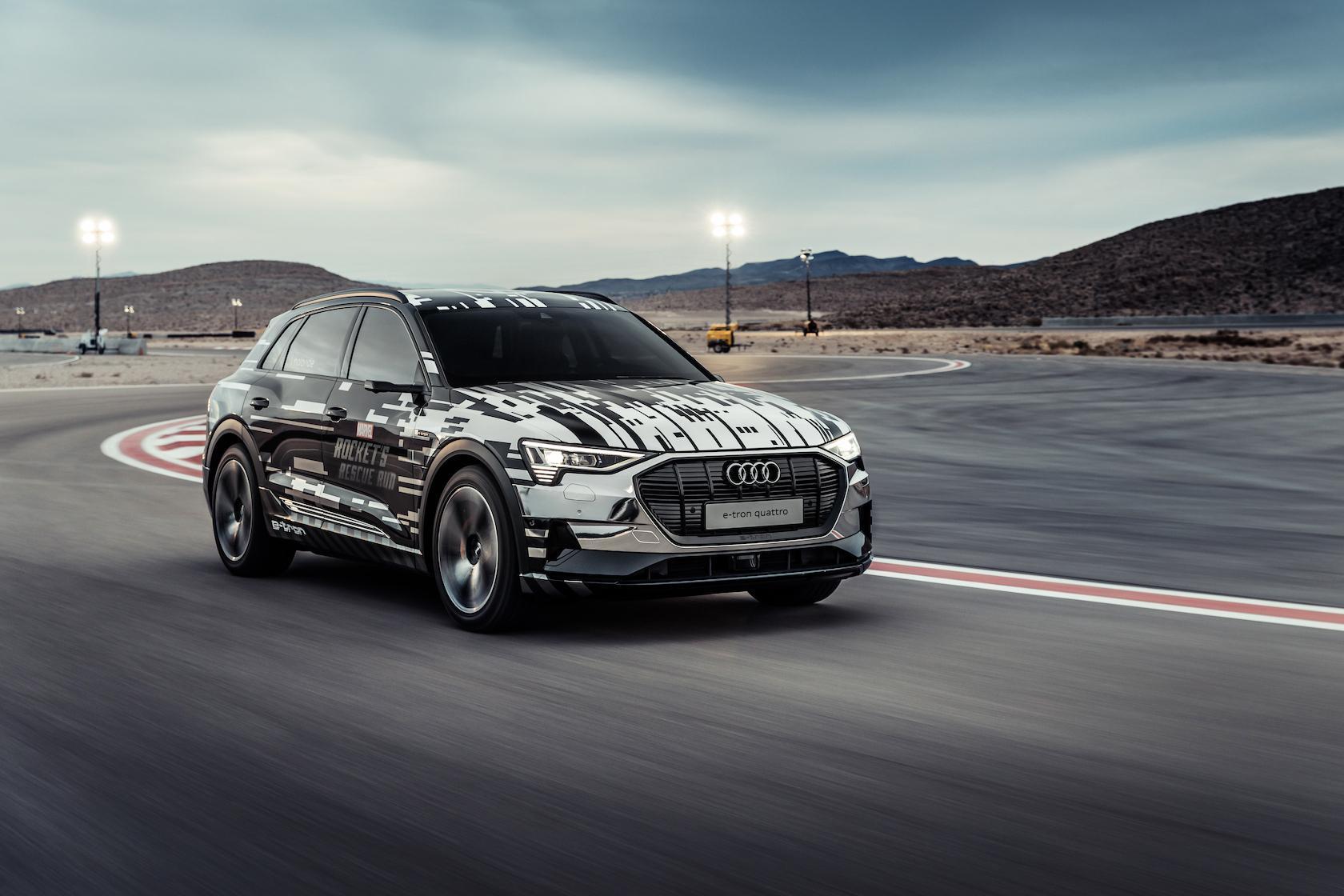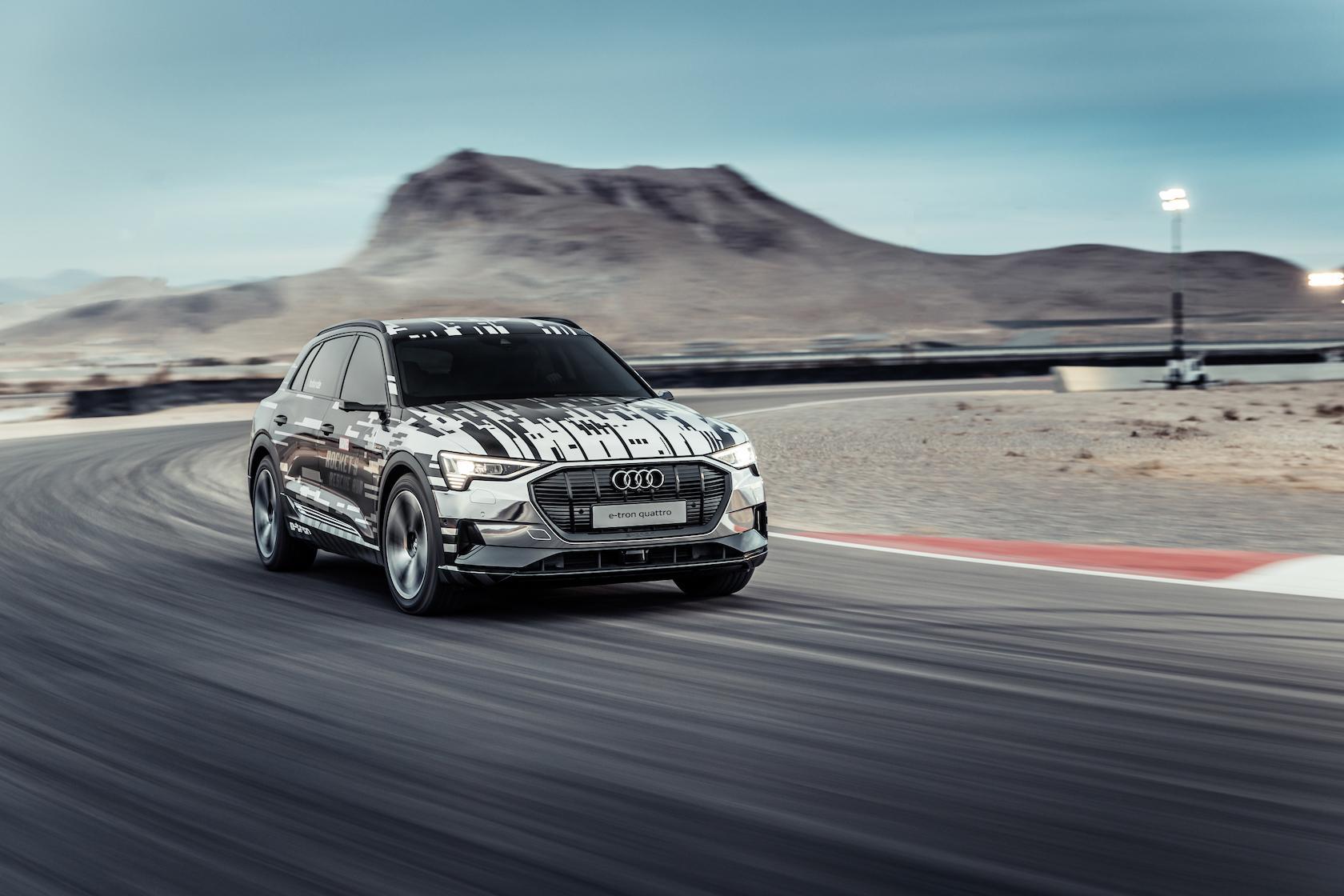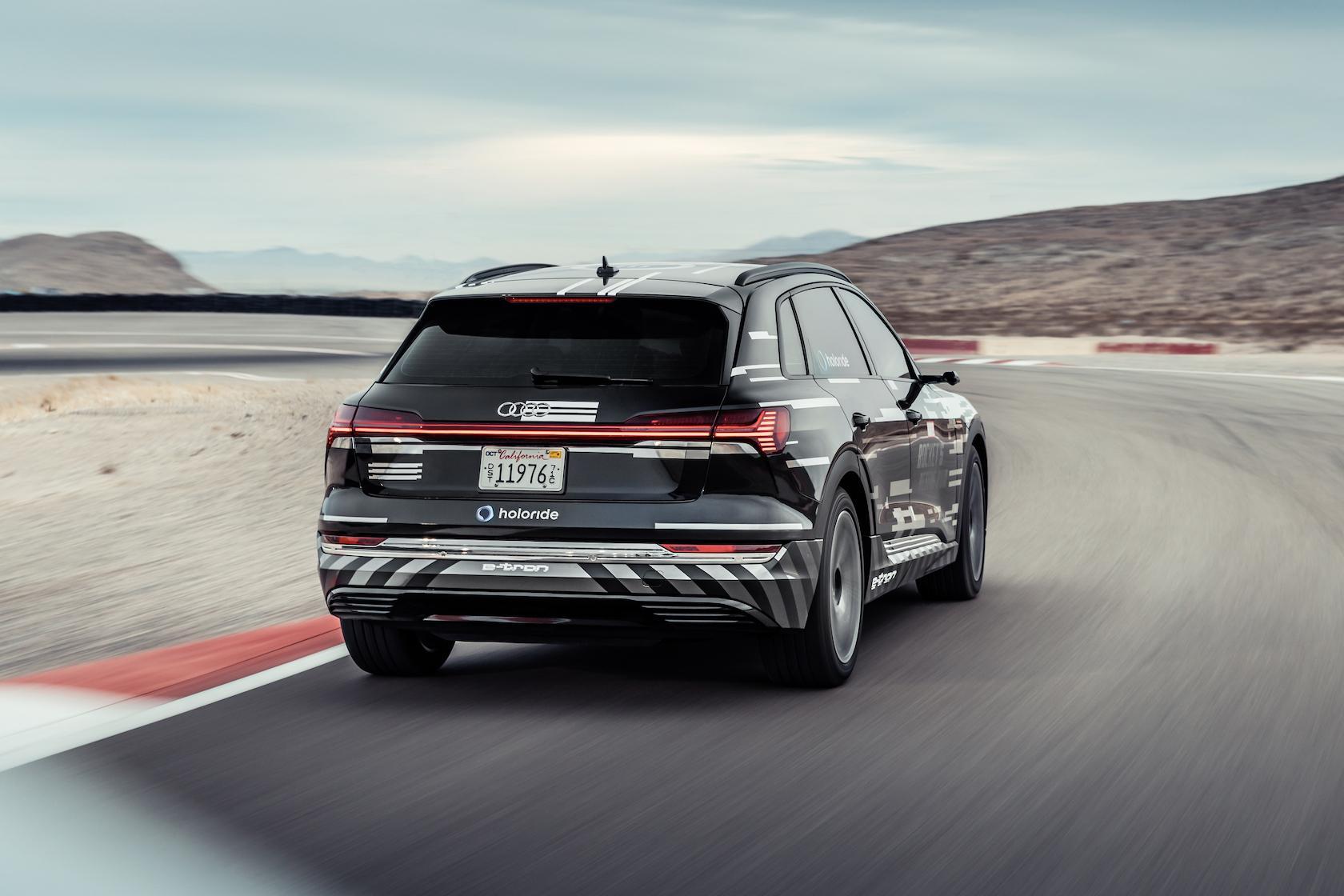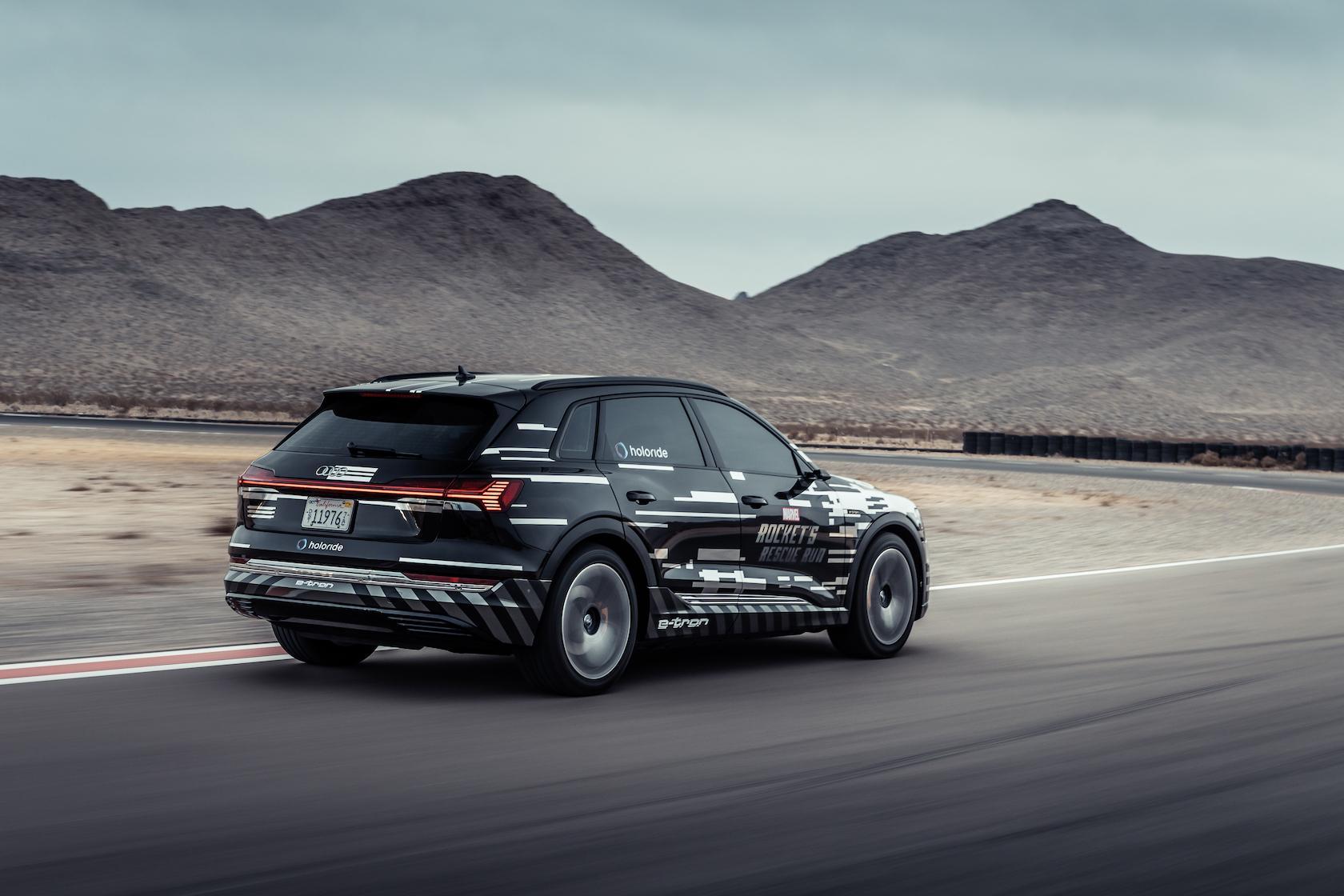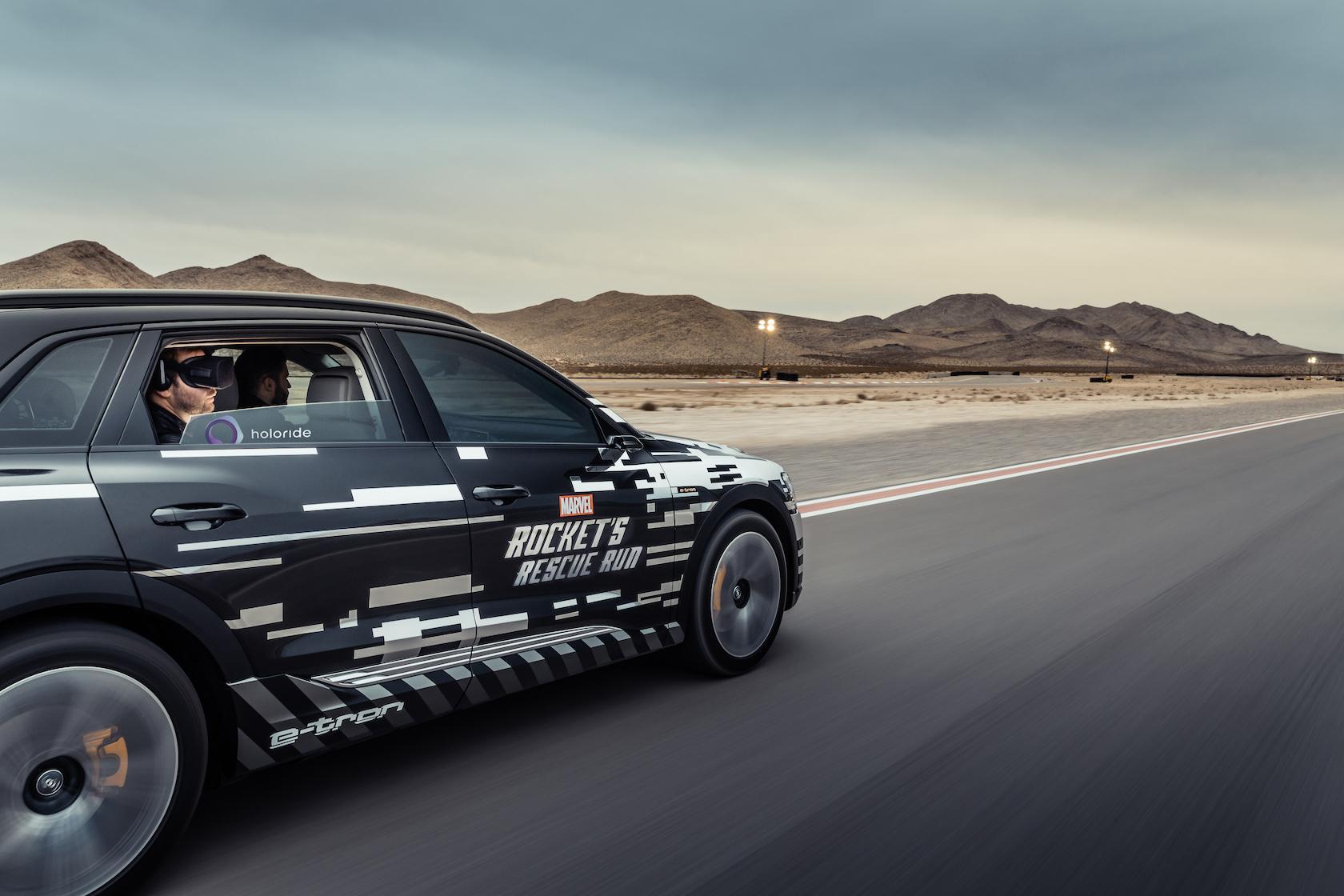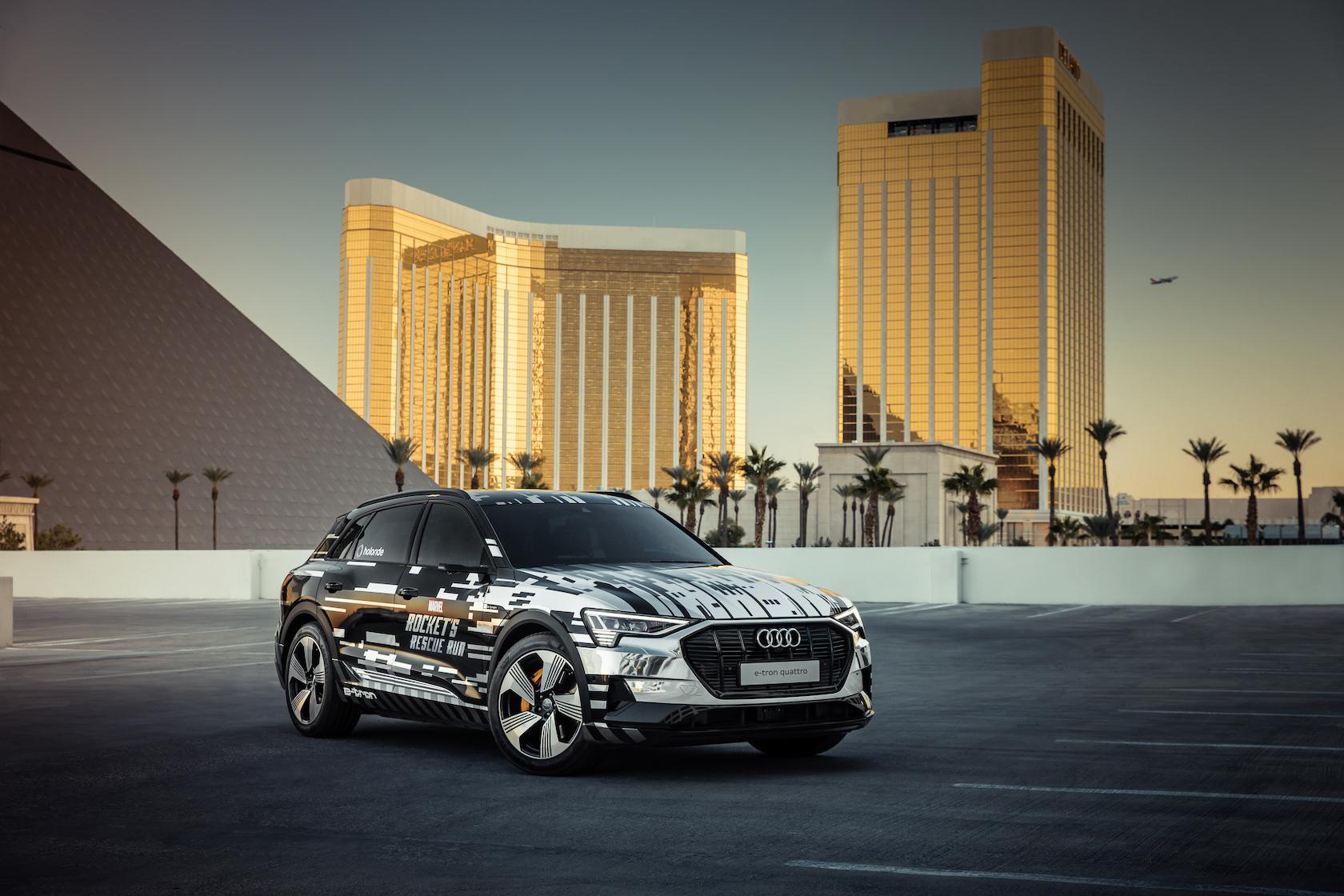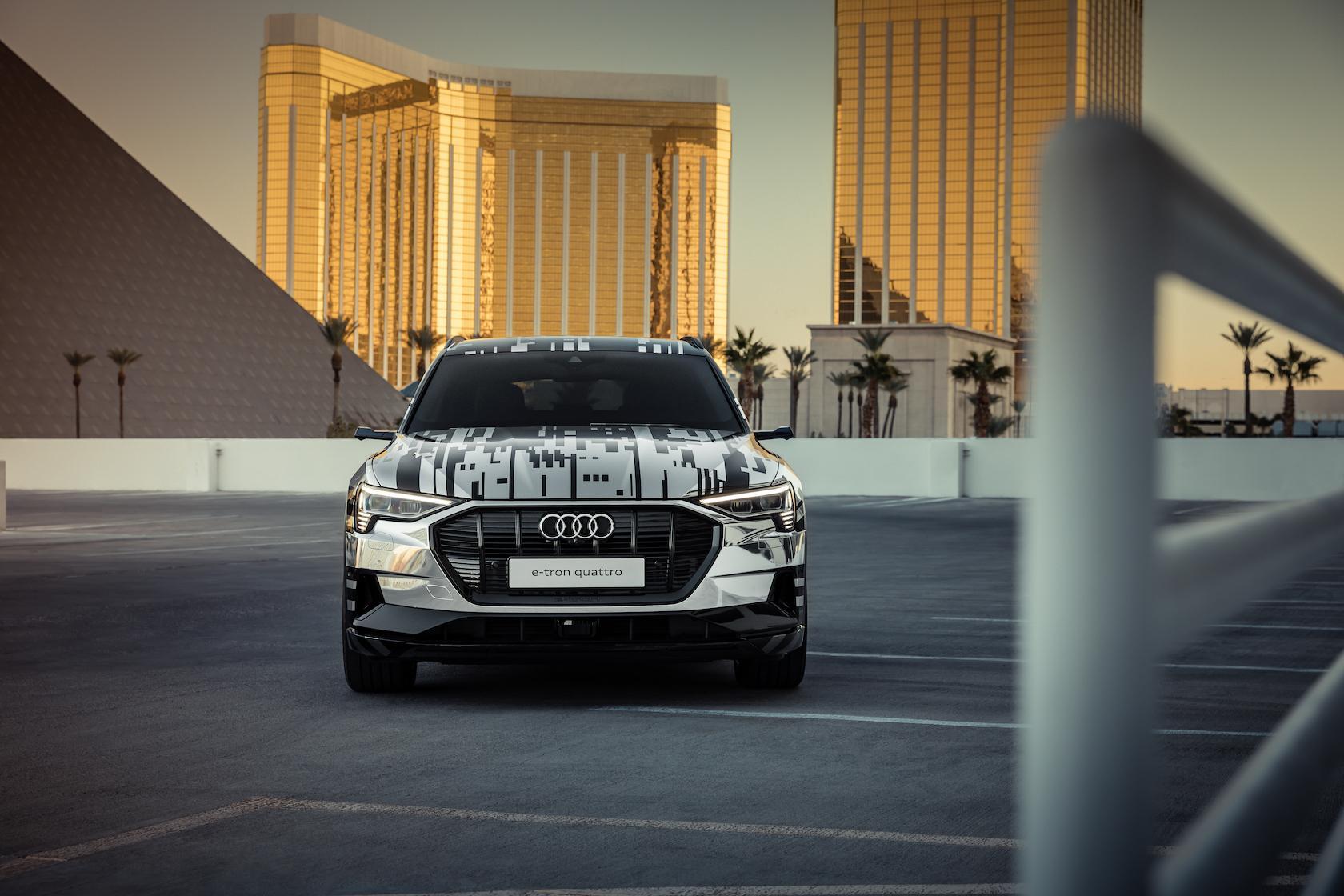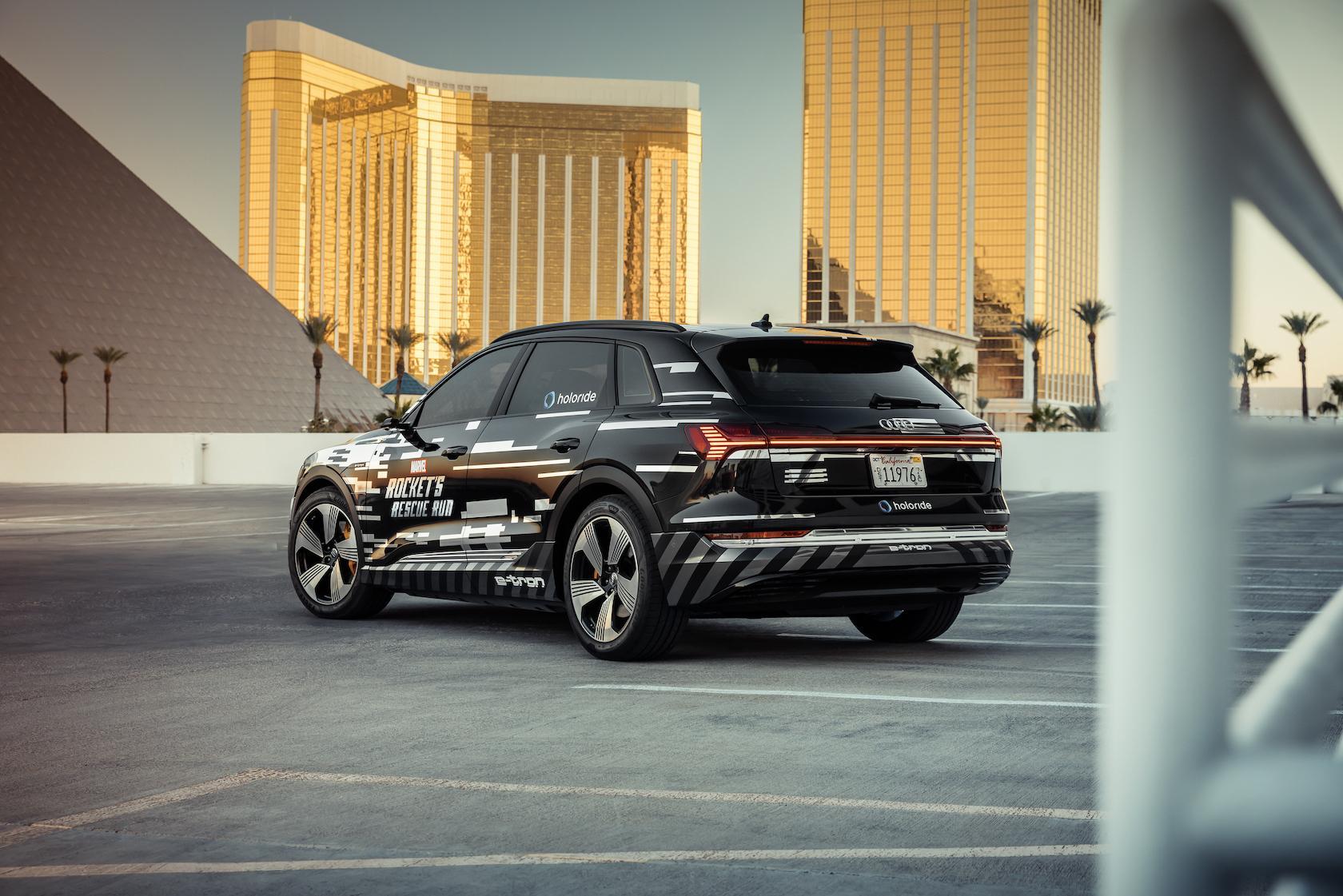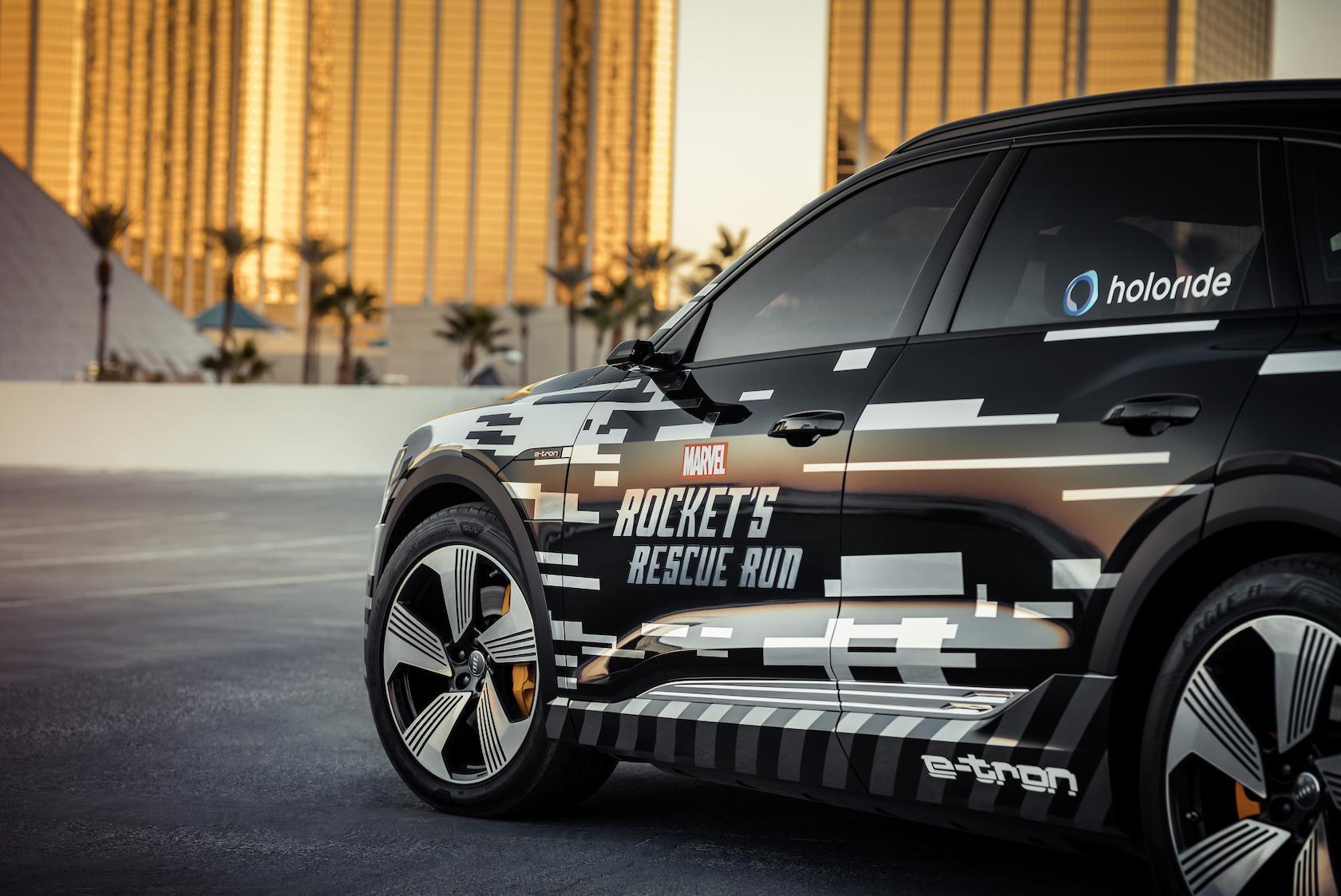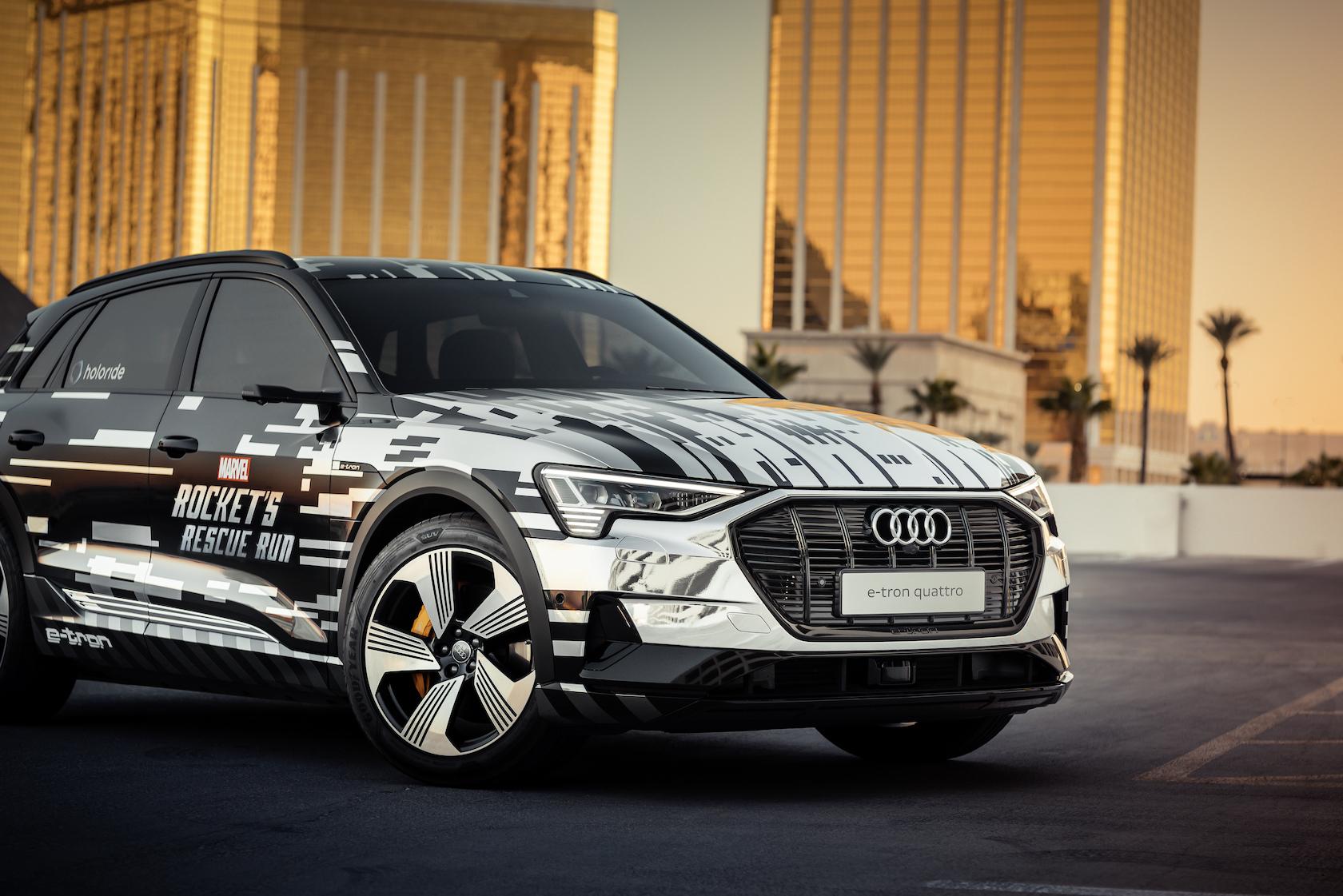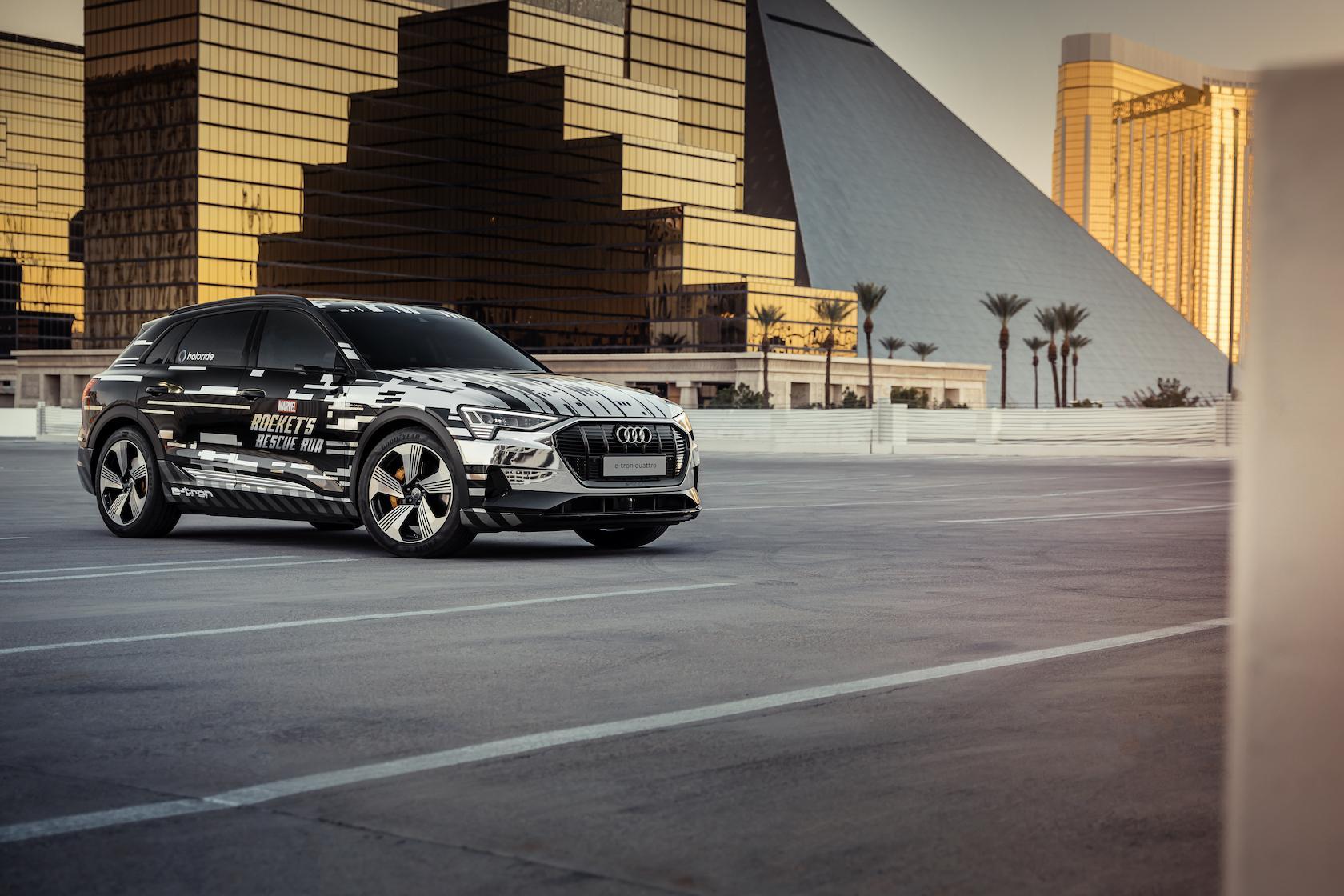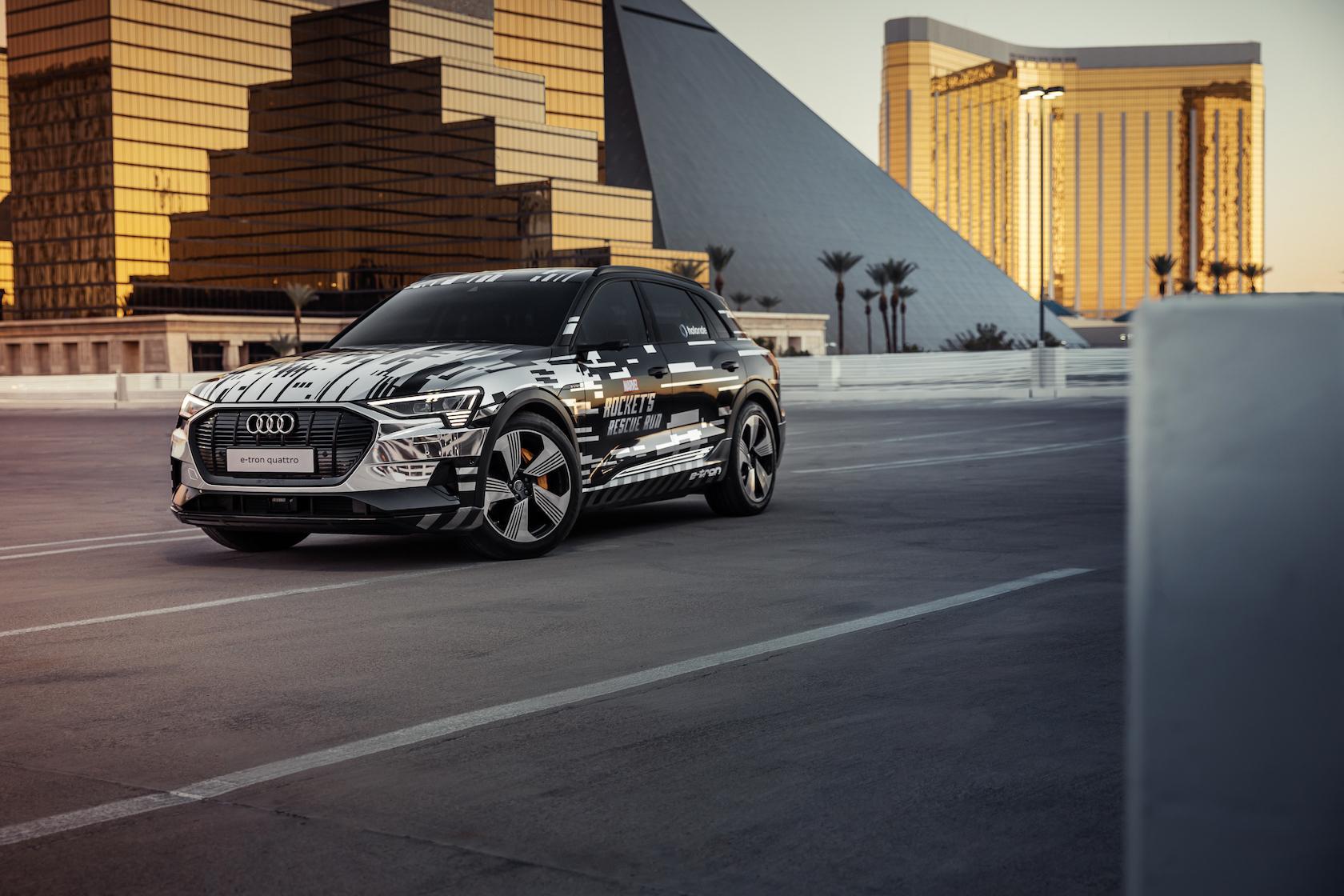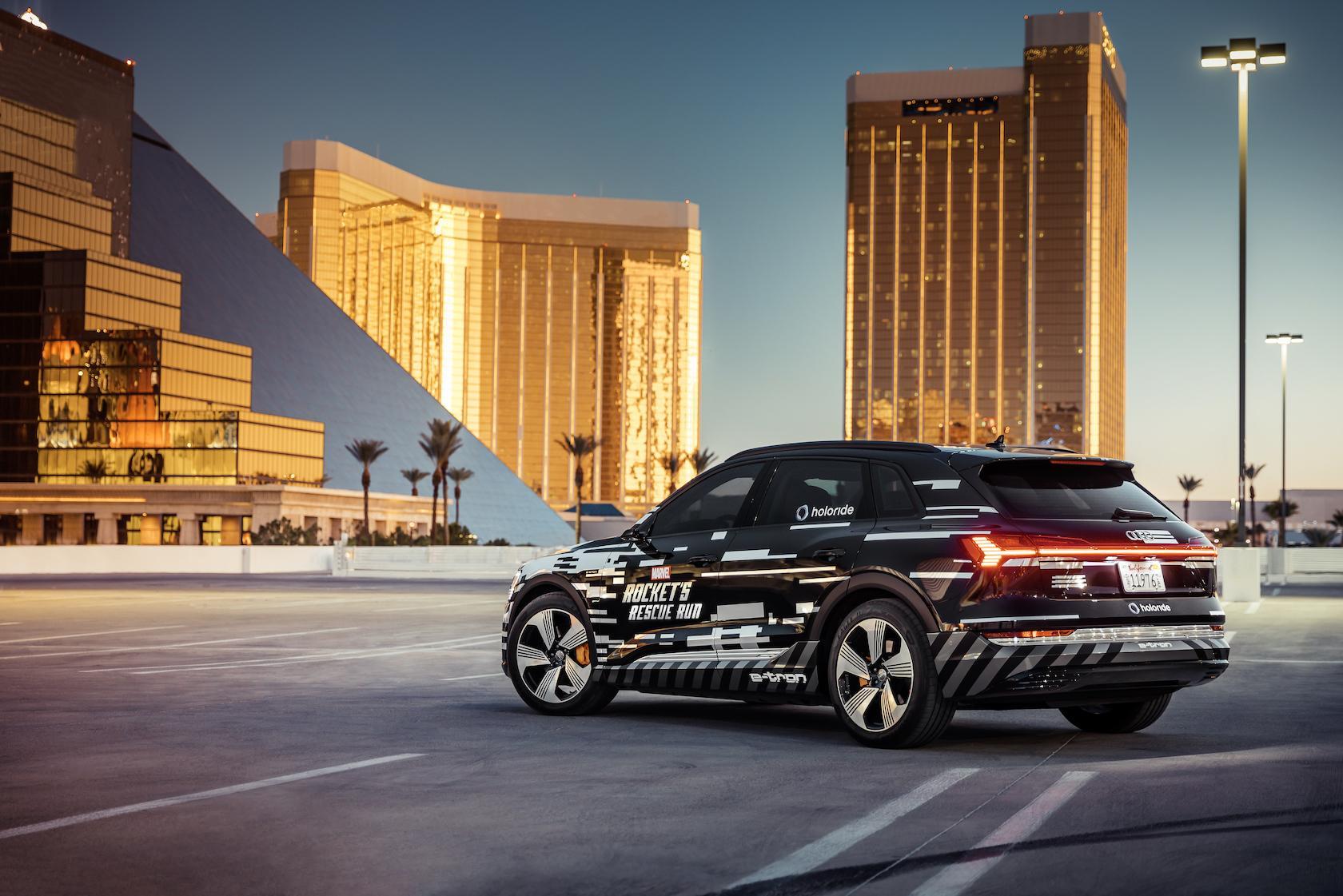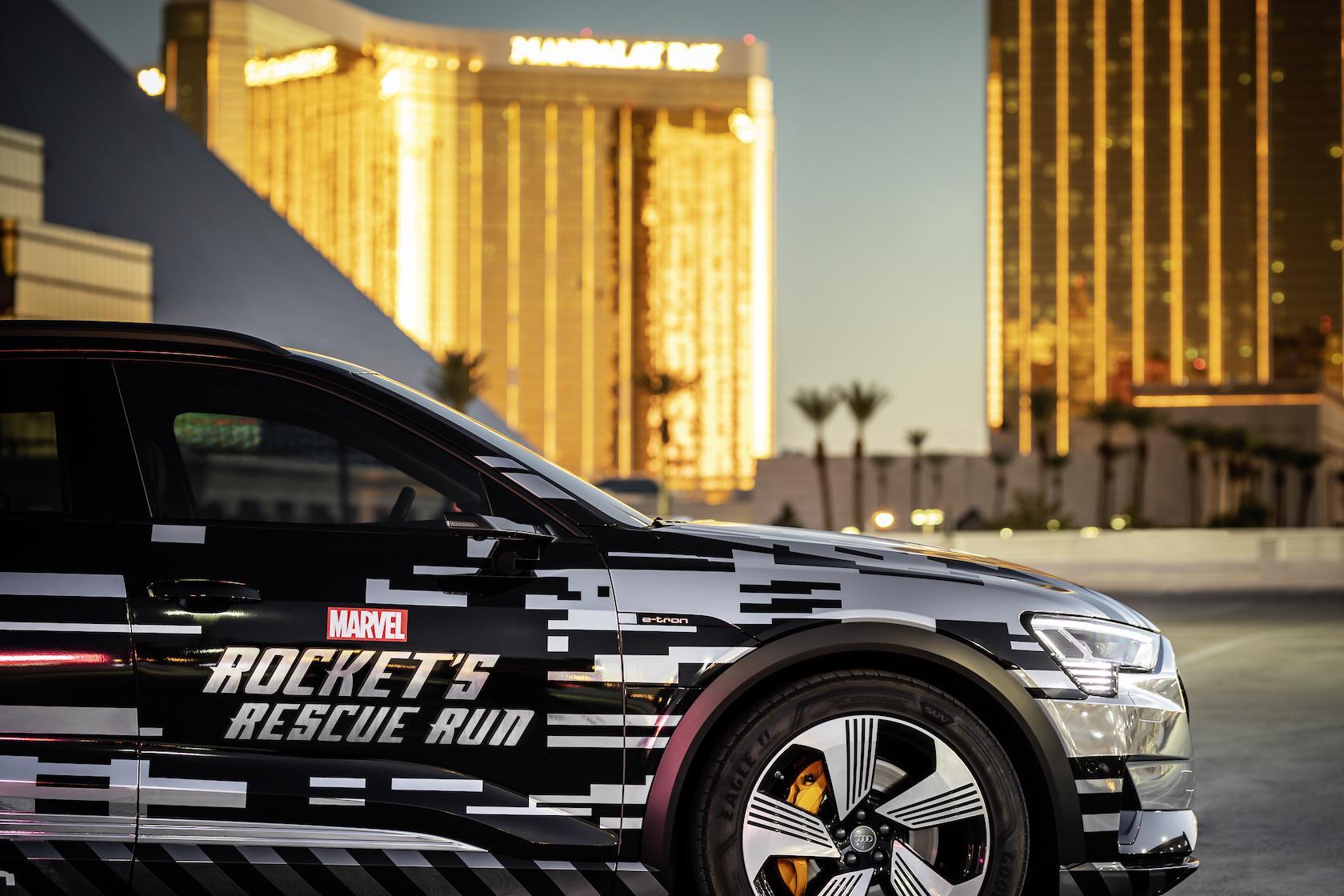With Audi Holoride, I Was The Disney VR Hero In The Backseat Of An E-Tron
From the outside, it looks as though I'm in the back seat of a new Audi e-tron, being driven around Speed Vegas for roughly two laps. Look closer, though, and I'm not making awkward small-talk with my driver: instead, I donned a set of Oculus Rift virtual reality glasses, was handed a controller, and set to work being among the first to experience Holoride's vision of next-gen in-car entertainment.
That I was in an Audi was no coincidence. Holoride began as a project within the automaker, as it explored potential ways to supercharge the cabin experience in its future models. Turns out, that's an idea that has some serious legs, and so Holoride has been spun out as a startup in its own right, with Disney getting involved, along with Marvel, and some sizable ambitions.
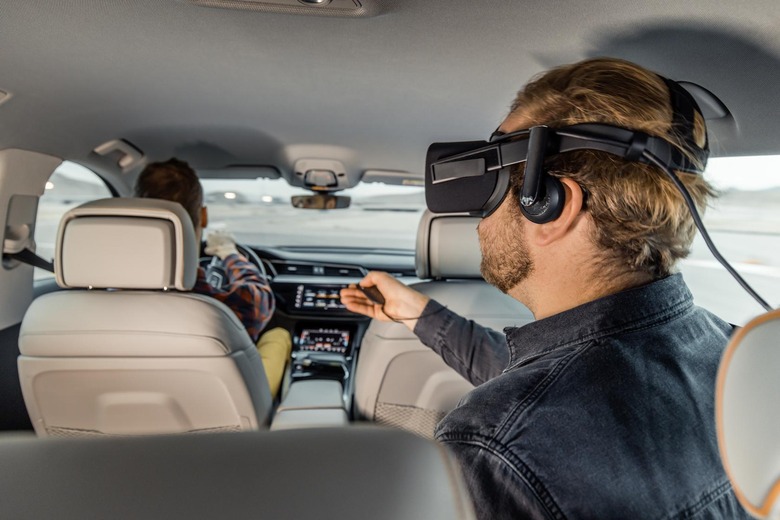
As nice as the e-tron's interior might be, once you strap on the Rift it's replaced by a whole new world. In this case, it was a specially-created demo by Disney Games and Interactive Experiences, called Marvel's Avengers: Rocket's Rescue Run. Using the controller, I was in charge of blasting away asteroids aimed at destroying us. That in itself is neat, but then again anyone can do that right in the comfort of their living room.
If you've tried to wear a VR headset in a moving car before – hopefully not while driving it yourself – you'll probably know why it's a bad idea. Motion sickness can be a serious kill-joy for any sort of virtual reality experience, particularly when you're in a vehicle and your body is getting conflicting messages to what your eyes are seeing.
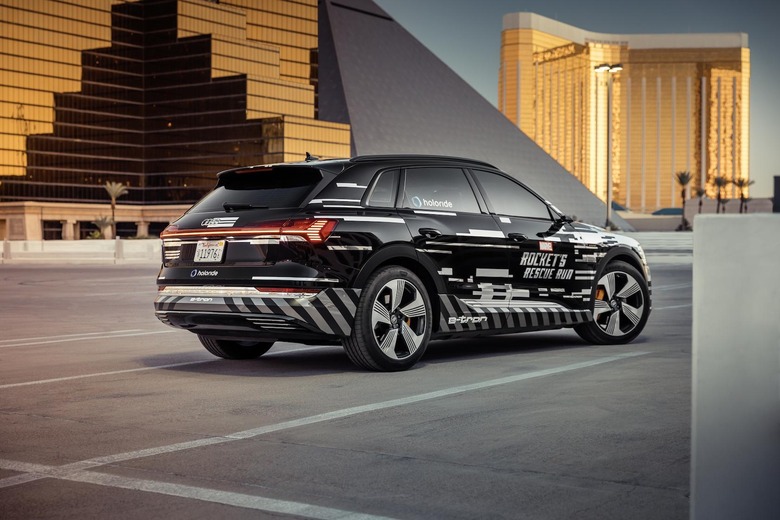
What sets the Holoride experience apart is how integrated the VR experience is to the movements of the car itself. The experience is designed to tie in all of the telemetry data captured by the e-tron's sensors, and synchronize every turn, every acceleration, and every braking maneuver to match the gaming experience.
At one point, for instance, we got an audio cue that we were speeding up... then suddenly I felt a massive acceleration – as if I was blazing through space. In reality, the e-tron sped up quickly from around 20mph to 90mph. The demo game and the car data are sync'd up, but what Audi and the Holoride team tells me is that the aim is to make gaming experience more "elastic." Depending on how long your drive route is, and what unexpected delays you might encounter, that's how long the game will last.
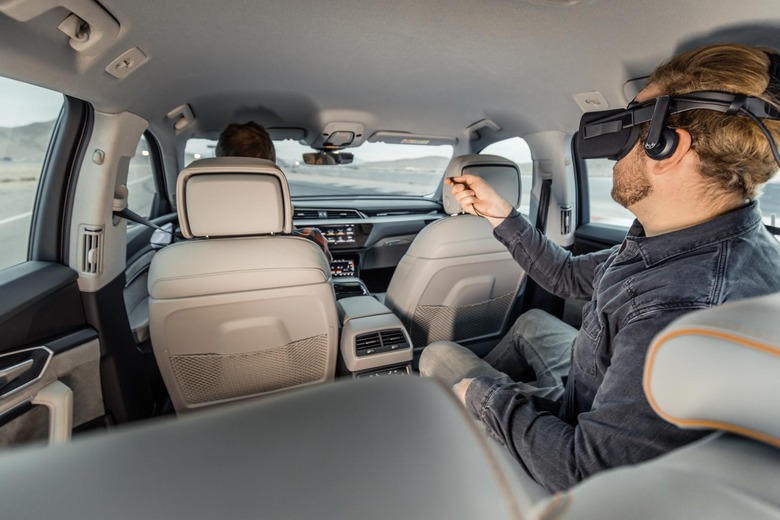
It's still early days for Holoride as an experience and as a platform. The gist of this particular early demo was to demonstrate the potential of the platform as a new entertainment category. I can certainly see this going beyond entertainment. Imagine being in Rome, where traffic may be slower: instead of a game, Holoride could load up an educational experience, as you drive through the Roman Empire back in the days when it was ruled by Caesar, while in reality you Uber to your lunch date or home from work.
Just because Marvel's Avengers: Rocket's Rescue Run was set in space, there's no reason every Holoride trip needs to be on the macro scale. A different experience could take you into the human body, your route through veins, organs, and more all echoing the movements of the car outside you.
Holoride isn't an Audi product, and nor is it completely owned by Disney. They plan to onboard addition investors in the future, in fact, with the eventual goal of opening the platform the broader content creator community. Other automakers are expected to join in on the fun, too, though I'm perhaps most excited about the potential when it's the car itself doing the driving.
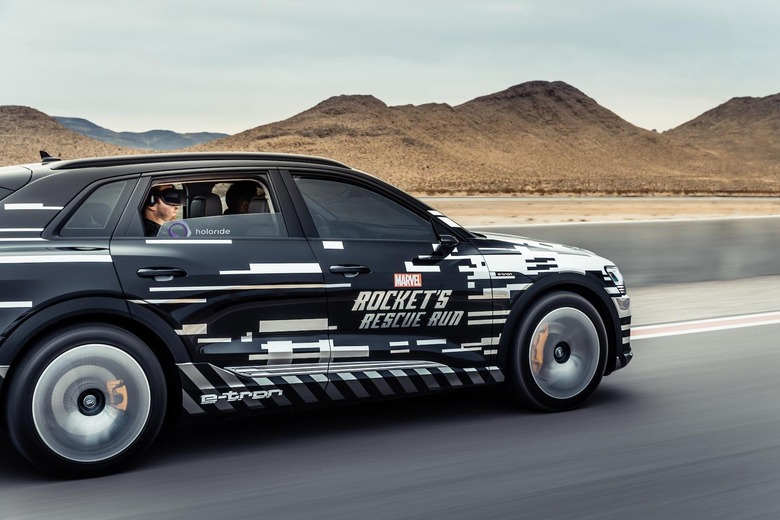
The question of what occupants in a self-driving vehicle will occupy themselves with is one several car companies have experimented with. Mercedes-Benz's F 015 Luxury In Motion autonomous prototype back in 2015 envisaged transparent displays, for instance, that could either show the real world moving past the car, or replace that with something more aesthetically pleasing. More recently, Volvo explored the idea of replacing the traditional car interior with a sleeper cabin, with the goal of replacing short-haul flights with a fleet of driverless pods instead.
Even if the seats you're sitting in during your autonomous car ride are more traditional, Holoride could easily tap into more of the driverless sensor data to augment the experience. The LIDAR scanners used to spot pedestrians, cyclists, and other objects around an autonomous vehicle could used to transform those people into aliens to battle, animals on a virtual safari, or something else within the game. In effect, every adventure would be different, because every trip would be slightly different.
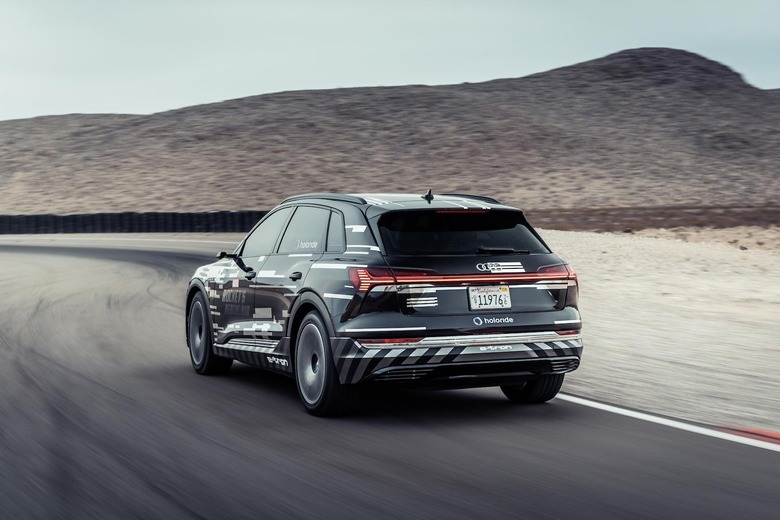
All-in all, for a few minutes I felt like I was Rocket flying around space. I tried shooting at Iron Man, as you do, but of course you can't; he'll talk back to you if you hit just right, mind.
It's early days for Holoride, certainly. This one demo experience is a long way from being market-ready, and it's unclear just how much it could have deviated from the script and route that Audi and Disney's ride-along was following. All the same, for one of the first times in a new car I wasn't tempted to call shotgun for the front seat, and once Holoride starts to gather pace and developers pick up on experiences, the VR world is only going to get more intriguing.

